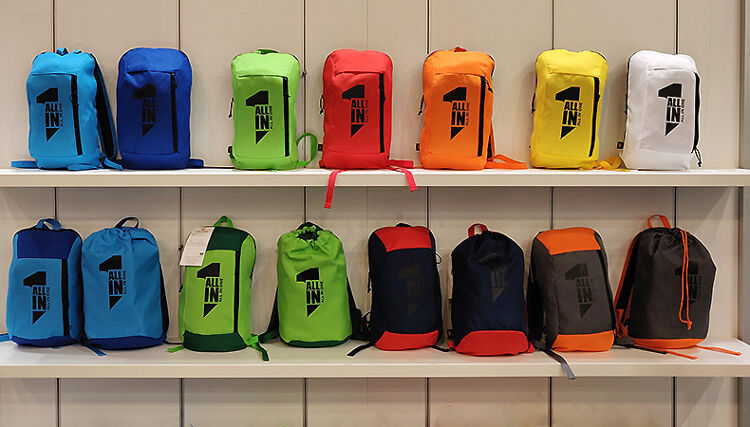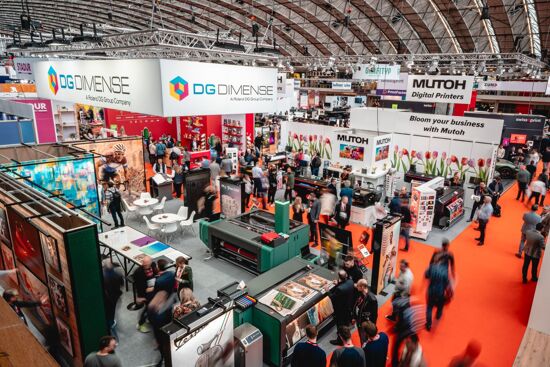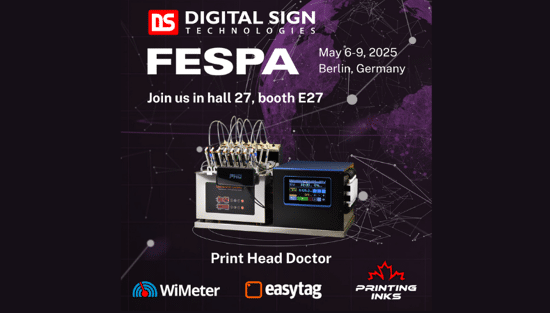Pros and Cons of using Screen Printing for promotional giveaways

Is screen printing still used for promotional gifts? Sonja Angerer shares which applications are best suited for screen printing and discusses the future of logo printing. She discusses the advantages and disadvantages of using this technique for promotional giveaways and the future of screen printing.
Screen printing is one of the oldest existing printing techniques. The robust and versatile process has been established for decades for printing promotional gifts. Screen printing can be used to print on a variety of materials such as textiles, metal, plastic, and glass, therefore it is quite popular for these applications.
Recently, manufacturers such as Mimaki, Mutoh and Roland DG have launched digital printers specifically designed for printing on promotional giveaways. They use UV-curable inks to personalise promotional items and photo gifts. Nevertheless, screen printing still has its place in the promotional products industry as it offers some very tangible advantages.
 Caption: Screen printing can also be used to print on curved promotional items such as ball-pens. Image Credit: S. Angerer
Caption: Screen printing can also be used to print on curved promotional items such as ball-pens. Image Credit: S. Angerer
Areas for screen printing in the promotional products industry
The range of promotional items that can be printed using screen printing is vast. It includes textile products such as T-shirts and bags. Logos on ceramics, key rings, USB sticks and other plastic giveaways.
In screen printing, there are special inks available for numerous surfaces. Manufacturers such as Marabu offer a wide range of inks.
Modular systems are common for most applications. In addition to screen printing inks, they also include primers for pre-treatment and varnishes to protect the print.
Screen printing systems for promotional products and other applications are mainly available for solvent-based inks and UV-curable variants. LEDs are increasingly being used instead of mercury vapour lamps, like in digital printing. Screen printing machines are available as a manual printing table, semi-automatic and fully automatic, as well as a production line with several application units in succession. Most of them are flatbed models, but there are also custom-made ones, e.g. for tubes.
With a screen-printing system from manufacturers such as Alraun, Rokuprint or Thieme, you are not limited to one ink manufacturer regarding the production of promotional items. Although, it is important that you choose the right technology. This means that UV-curing inks, for example, can only be used in screen-printing systems with UV lamps. However, users can help themselves to the world market and therefore buy more cheaply.
As an analogue process, screen printing requires print templates, which are quite costly. This is especially true when compared to digital printing, which does not require screens or other physical templates.
When printing promotional items and textiles, screen printing is mainly used for one or two-colour logo prints or large single-colour areas. Occasionally, it is also used to apply special fluids such as black light paints or textured paints as these are not possible with digital printing.
 Caption: There are dedicated screen-printing inks available for the different surfaces. Image Credit: S. Angerer
Caption: There are dedicated screen-printing inks available for the different surfaces. Image Credit: S. Angerer
Advantages of screen printing in the production of promotional gifts
Today, screen printing technology is successful in the production of advertising materials because it offers a few more advantages over digital printing. For example, logos that have been applied to promotional items and textiles with the help of screen-printing inks are quite durable, this is due to the thickness of the paint. In screen printing, up to 2 mm layers are possible. With digital printing, the ink is absorbed into the plastic or lies on the printing substrate in a very thin layer. As a result, a digital print diminishes and scratches quicker.
In addition, both screen printing machines and inks can be adapted exactly to the desired application. Although the range of materials used in promotional products is very wide, digital printers usually only uses one type of ink. So, it must be able to cover all possible surfaces.
The large number of inks and fluids that can be used in screen printing also makes purchasing cost-effective. A kilo of standard branded screen-printing ink can often be purchased for approximately 30 euros. A litre of refill ink for any inkjet printer costs about 80 euros from a renowned third-party manufacturer. OEM ink in cartridges and tanks may cost a 1000 euros or more per kilo, depending on the container.
For larger orders of promotional items, a screen-printing process is therefore commonly more cost-effective. This is due to the costs of screen production being spread over so many pieces that they are not significant for the individual product.
 Caption: Screen printing technology is particularly suitable for large quantities of promotional items. Image Credit: S. Angerer
Caption: Screen printing technology is particularly suitable for large quantities of promotional items. Image Credit: S. Angerer
Disadvantages of screen printing in the production of advertising materials
Despite its undeniable advantages, in recent years screen printing has become less popular regarding the production of promotional products. This is mainly because large-scale productions of promotional gifts are nott as frequent as they used to be. E-mail, social media or messenger messages have replaced direct mailing with inserts. Instead, companies are increasingly relying on entirely digital giveaways such as bonus content or discount codes.
Current technology has also made it possible to differentiate and address target groups more carefully. As a result, advertising materials are commissioned in smaller quantities. However, this means that the cost of screen production has a much greater impact on the individual giveaway. As a result, its price increases compared to the same product in the digital printing process.
For technical reasons, individualisation, four-colour prints, delicate gradients, and photorealistic motifs are also either not possible in the screen-printing process or are so complex that production seems uneconomical.
The Future of Screen Printing in the Promotional Products Industry
The future of screen printing in the promotional products industry looks positive despite the obstacles. Recently, exciting hybrid solutions with digital and screen printing have emerged. They combine the strengths of both methods. In the screen-printing process, for example, white underprint or large-scale print varnishing can be used much more cost-effectively than with digital printing presses. These are then used to only provide four-colour motifs or personalisation.
In addition, screen printing offers additional, innovative finishing options for promotional items such as fragrance, glitter, and metal coatings. As a result, it is continuously adapting to changing market needs and remains an important part of haptic advertising. In combination with digital technologies, it will therefore continue to play a central role in the promotional products industry in the future.
To discover the latest content that covers a wide range of sectors screen printing, digital printing and hybrid printing sign up for FESPA’s free monthly newsletter FESPA World available in English, Spanish and German.
Topics
Interested in joining our community?
Enquire today about joining your local FESPA Association or FESPA Direct
Recent news

FESPA 2025 Feature Programme confirmed: both new and returning
FESPA Global Print Expo 2025 is set to introduce its newest editions to its feature programme, SmartHub and the ESE Pavilion, as well as welcome the return of existing features: the 2025 FESPA Awards; the high-adrenaline World Wrap Masters competition; and the Club FESPA Lounge.
.png?width=550)
My Personalisation Experience
Richard Askam, a pioneer in Personalisation, transitioned from the drinks industry to creating iconic campaigns like Coca-Cola's "Share a Coke." His speaking career, includes leading a TEDx talk, becoming an ambassador for FESPA . In the past, he has led the conference sessions for the Personalisation Experience" conference, and will return this year to speak in a panel discussion.

What Does LED Lighting Do for Your Textile Frame?
LED lighting transforms textile frames, enhancing visibility and colour vibrancy for impactful displays. At European Sign Expo 2025, EFKA will showcase innovative illuminated and non-illuminated frames, including 3D and modular designs. LED's energy efficiency and storytelling potential make them crucial for modern visual communication.
